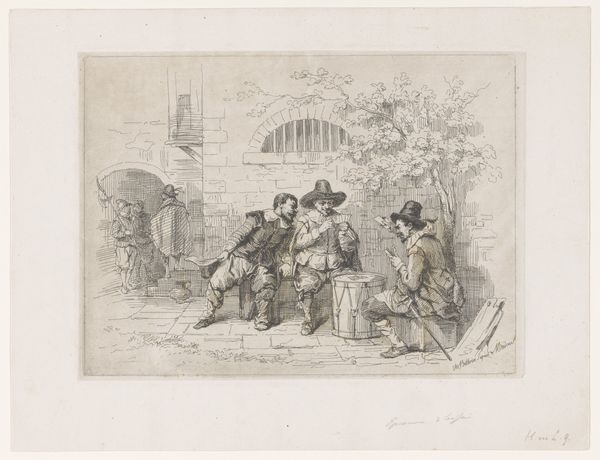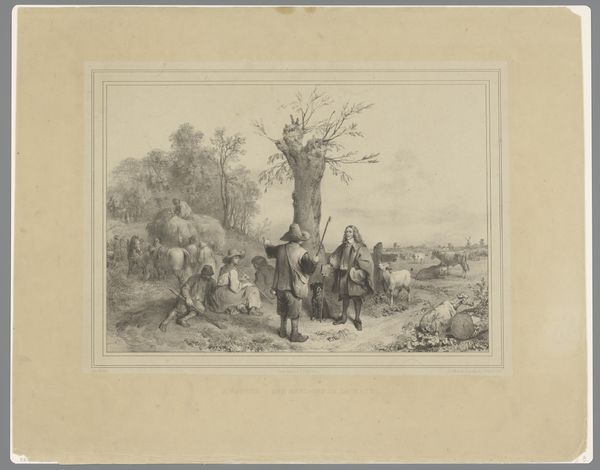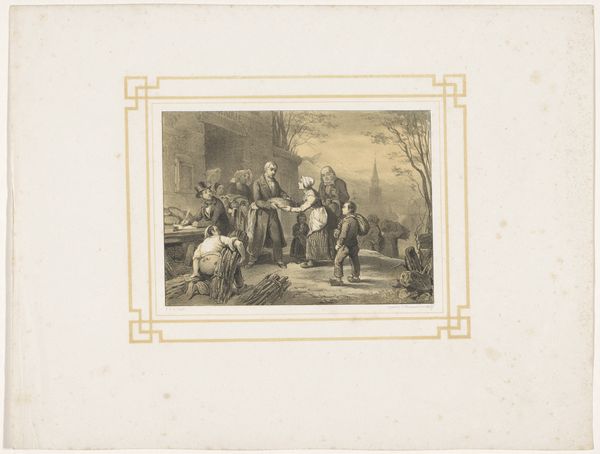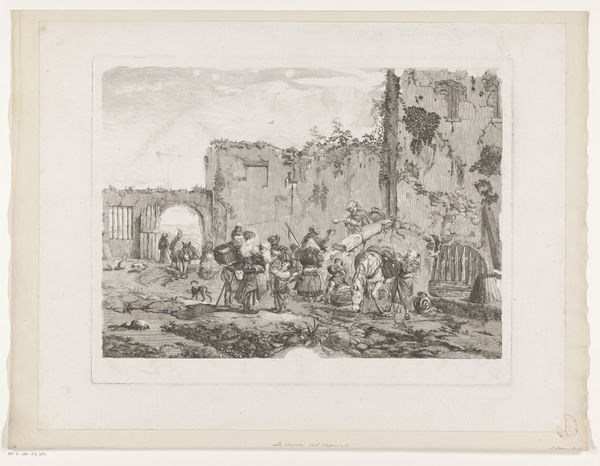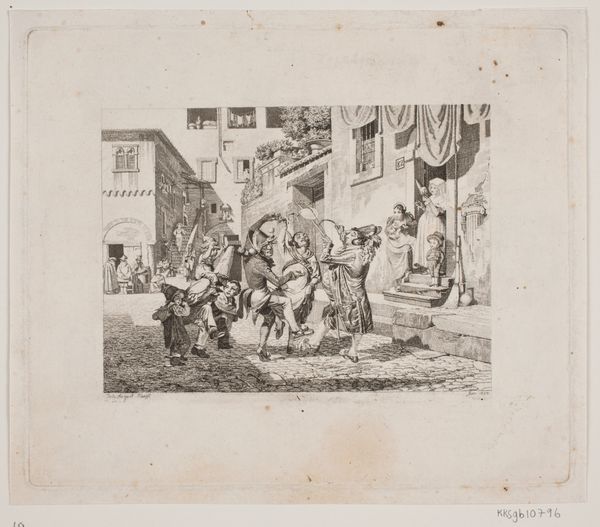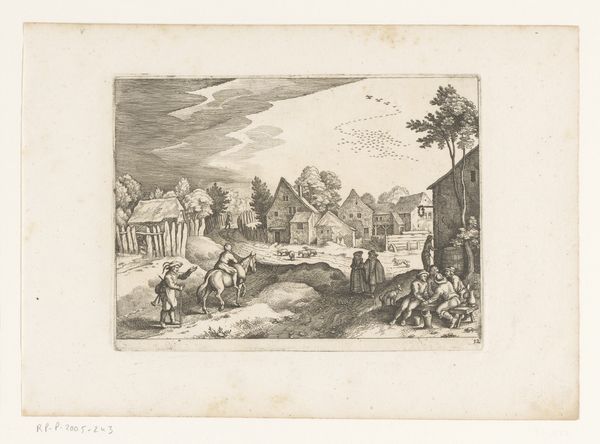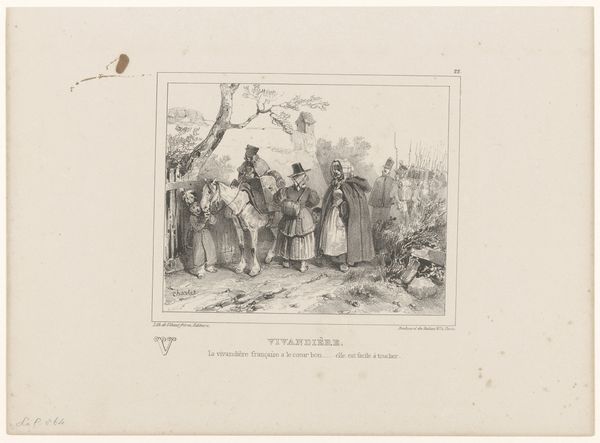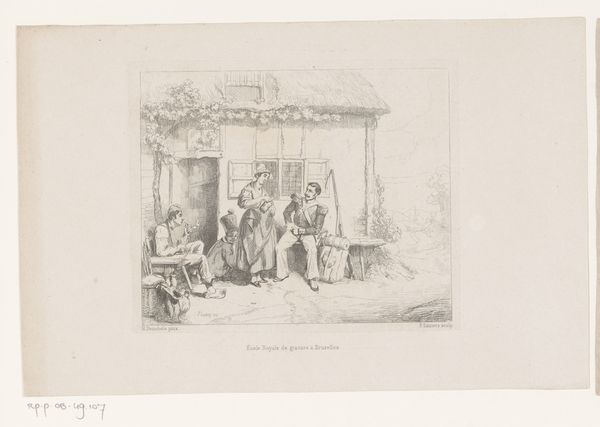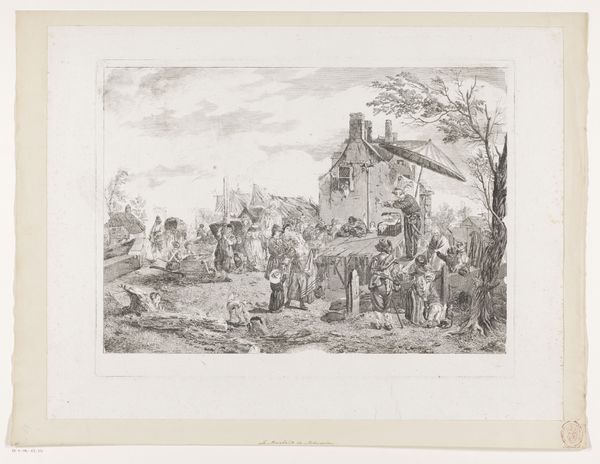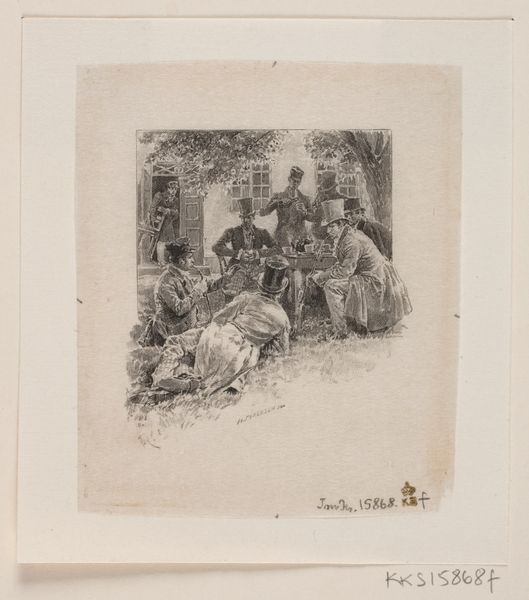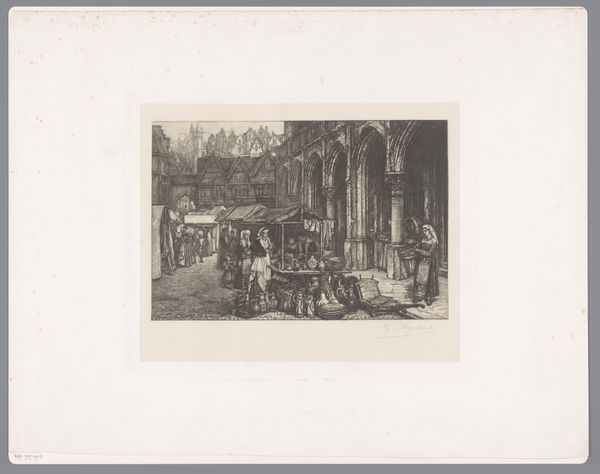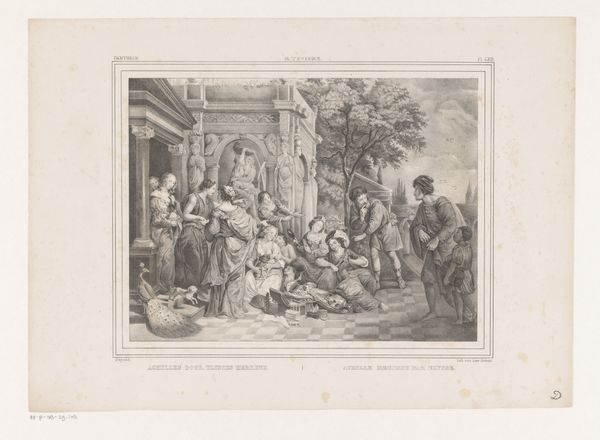
Philips Wouwerman tekent een paard na bij een waterbron 1838 - 1842
0:00
0:00
jeanbaptistemadou
Rijksmuseum
drawing, print, etching, engraving
#
drawing
# print
#
etching
#
landscape
#
coloured pencil
#
horse
#
genre-painting
#
engraving
Dimensions: height 446 mm, width 572 mm
Copyright: Rijks Museum: Open Domain
Editor: So, this is Jean-Baptiste Madou's etching, "Philips Wouwerman Drawing a Horse at a Well", created between 1838 and 1842. The scene is busy, full of people and animals. It almost feels like a staged performance rather than a candid observation. What do you see in this piece, in terms of its social commentary, maybe? Curator: What strikes me immediately is the gaze. Who is allowed to observe, who is being observed, and how does that dynamic reflect power? Madou references Philips Wouwerman, situating himself within an artistic lineage, but that act of homage becomes a lens through which to examine class and representation. Wouwerman often depicted scenes of the leisure classes and their relationship to labor. Editor: That's interesting. It seems like the figures are caught between work and leisure, gathering at the well, yet also seemingly posing for a picture. Curator: Exactly. Think about the concept of the "male gaze," and how it permeates art history. Are we, as viewers, complicit in objectifying these figures? Moreover, the very act of Madou recreating a Wouwerman drawing begs the question: Who has the authority to represent whom? This piece allows us to think about how artistic traditions can perpetuate social hierarchies. Editor: So, by Madou representing this scene, is he both celebrating Wouwerman and simultaneously critiquing the social structures inherent in his work? Curator: Precisely! And within this landscape, we can consider the availability of resources like water. Who controls them? Who has access? Consider, too, the composition. Where are the women positioned? What activities are assigned to them? Are they centered or marginalized? Editor: I never thought about looking at it that way, as more than just a historical genre scene. Seeing it as a commentary on representation itself opens up so many new questions. Curator: Indeed. Art provides not just aesthetic pleasure, but the space to examine our values. Ultimately, this print provides space for continuous critical questioning of social and artistic practices.
Comments
No comments
Be the first to comment and join the conversation on the ultimate creative platform.
